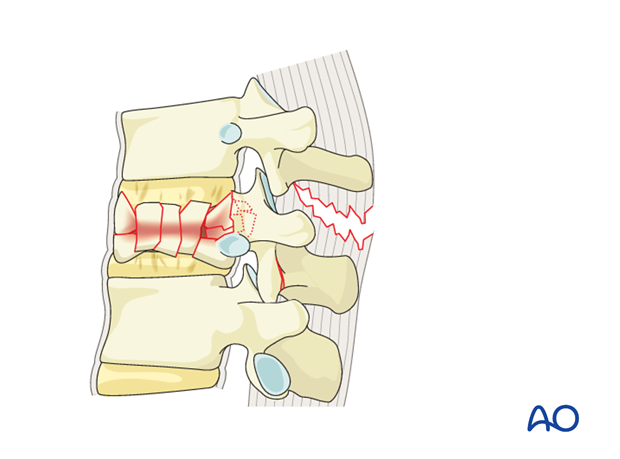AO Spine thoracolumbar injury classification system
1. Preliminary remarks
The classification system described here exists in order to provide surgeons from different institutions with a common language to discuss various injuries. It provides consistency in injury diagnosis and treatment.
The AOSpine thoracolumbar fracture classification system aims to achieve international acceptance.
The subsequent sections elaborate on how to assess the fracture type based on the flow chart shown in the figure.
To make a diagnosis, imaging studies are required.
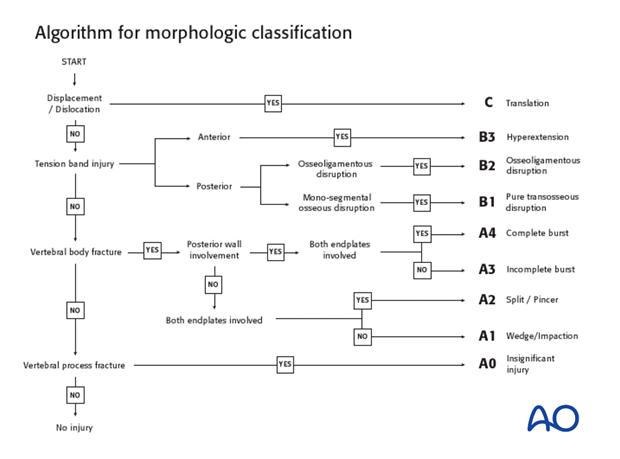
2. Step 1: Displacement/Dislocation
First, the physician must see if there is a translational injury. This is considered a type C injury.
X-ray/CT images are examined to determine if displacement and dislocation exists.

3. Type C injuries
Type C injuries are segmental injuries. They involve an interruption or separation of both the anterior and posterior components of the vertebral segments. The disruption of the anterior component may be through the disk or vertebral body. The disruption of the posterior elements may be through the spinous process, lamina, pars interarticularis, or posterior ligamentous complex.
These injuries can be associated with any A-type fracture (vertebral body).
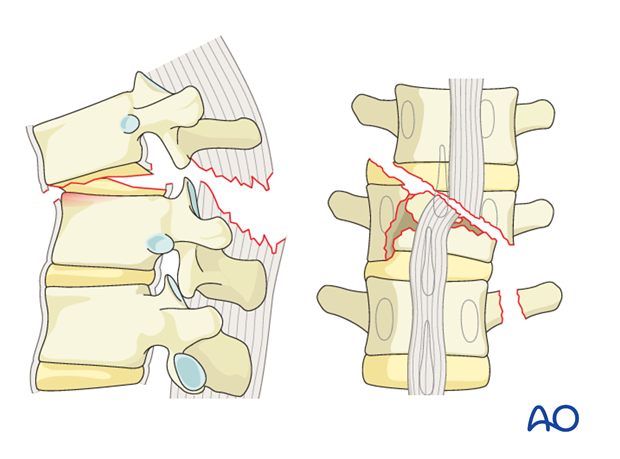
4. Step 2: Tension band injury
The treating physician now determines if there is a tension band injury to the spinal column.
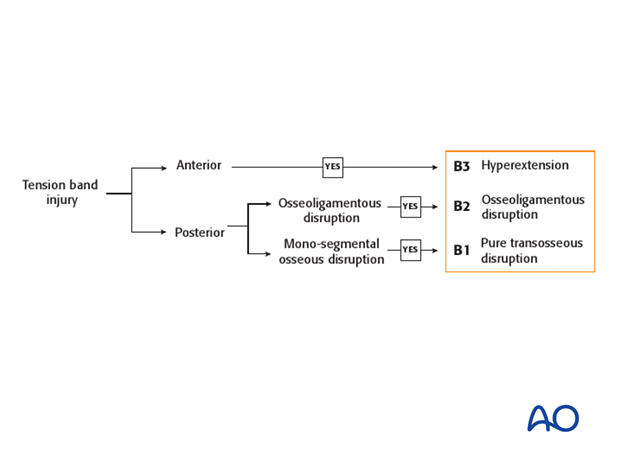
5. Step 2.1: Disruption of anterior tension band
If there is disruption of the anterior tension band only, then this is classified as a B3-hyperextension injury.

6. Type B3 injury
Subtype B3 is characterized by a tension injury of the disc or vertebral body, or both, resulting in a hyperextended position of the vertebral column.
The anterior longitudinal ligament is ruptured.
This is commonly seen in ankylotic disorders.
This injury can be associated with any A-type fracture (vertebral body).
Type B, such as type C injuries are segmental injuries (except B1).
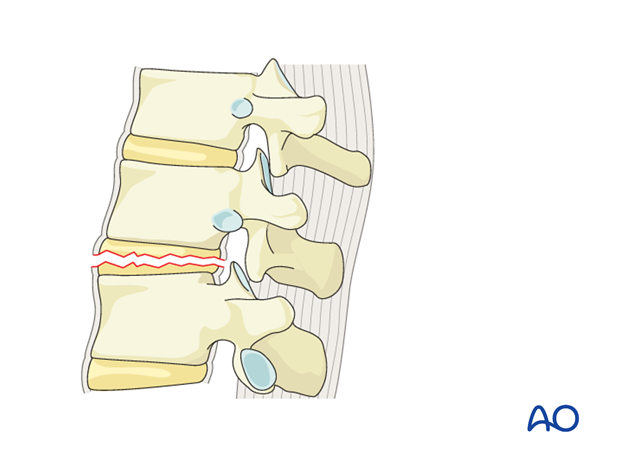
7. Step 2.2: Disruption of posterior tension band
If there is disruption of the posterior tension band without translation, then the injury is classified as either B1 or B2, depending on involvement of the structures disrupted.

8. Type B2 injury
Subtype B2 is a posterior tension band disruption with failure through both soft tissue and bony elements.
This injury can be associated with any A-type fracture (vertebral body).
Type B, such as type C injuries are segmental injuries (except B1).
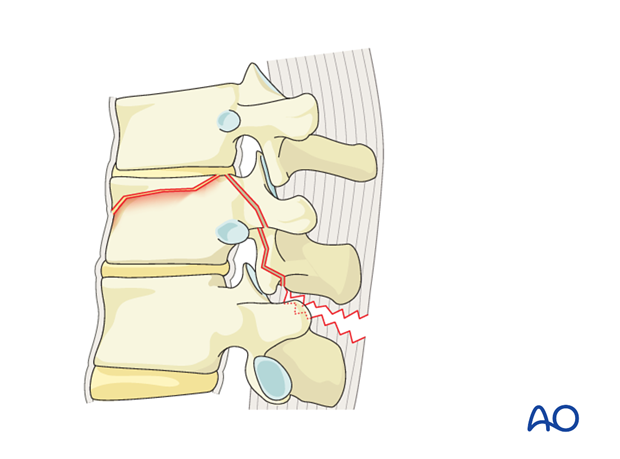
9. Type B1 injury
Type B1 is a monosegmental bony posterior tension band injury.
There is complete osseous failure of the posterior tension band at one level that extends into the vertebral body. These are also known as seatbelt or "Chance" fractures (named after George Quentin Chance, a British radiologist who first described it in 1948).
This injury can be associated with any A-type fracture (vertebral body).

10. Step 3: Vertebral body fracture
The presence of a vertebral body fracture should be determined. This can be seen in addition to both B and C type injuries.
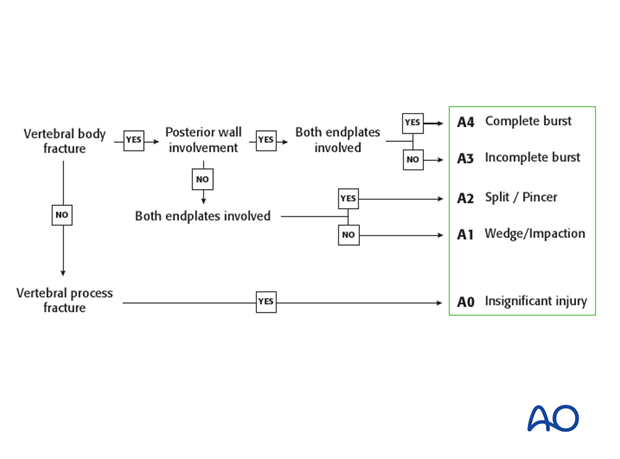
11. Step 3.1: Posterior wall involvement
If there is a vertebral body fracture, it is determined whether the fracture involves the posterior vertebral body wall. If yes (burst fracture), it is assessed whether both or only one endplates are fractured.
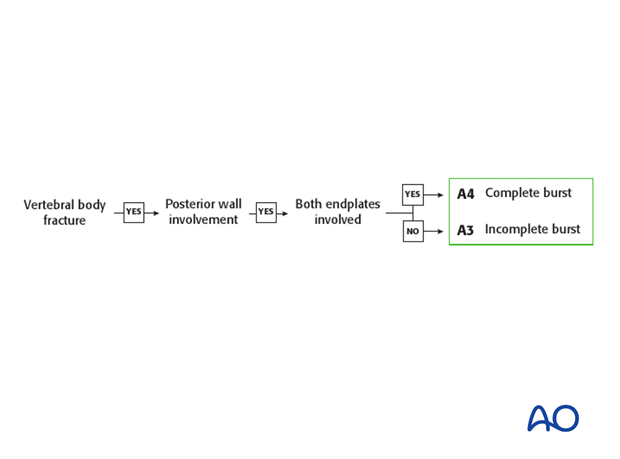
12. Type A4 injury
Type A4 burst injuries are fractures of both endplates.
A vertical fracture of the lamina does not imply posterior tension band rupture. It is a sign of compression forces.

13. Type A3 injury
Type A3 burst injuries are fractures of a single endplate. There may be a vertical fracture of the lamina. The posterior tension band is maintained.
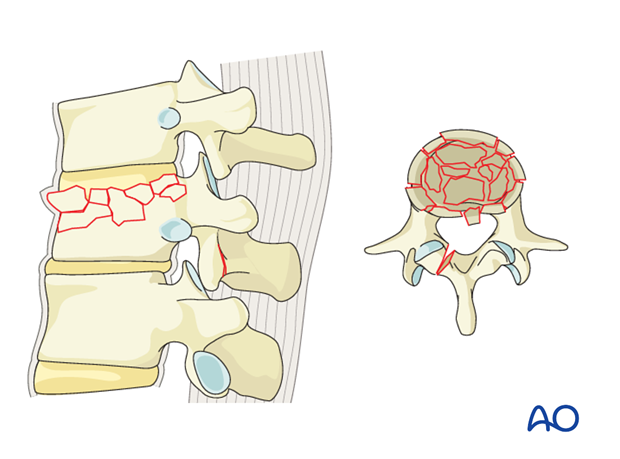
14. Step 3.2: Vertebral body fracture without posterior wall injury
A-type fractures are injuries without posterior wall injury.
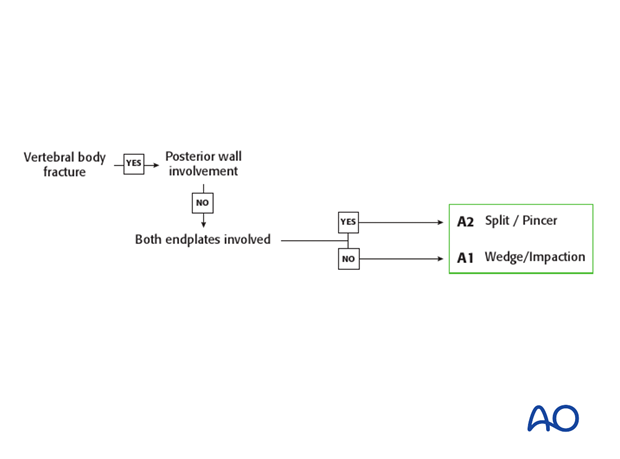
15. Type A2 injury
Type A2 injuries are vertebral body fractures in which the fracture involves both endplates.
These can be called split- or pincer-type fractures.
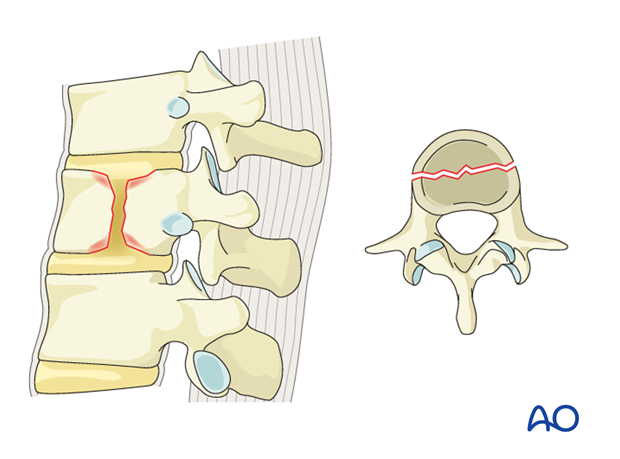
16. Type A1 injury
Type A1 injuries are vertebral body fractures with one or both endplates involved but the fractures do not connect with one another.
These can be called wedge compression or impaction fractures.
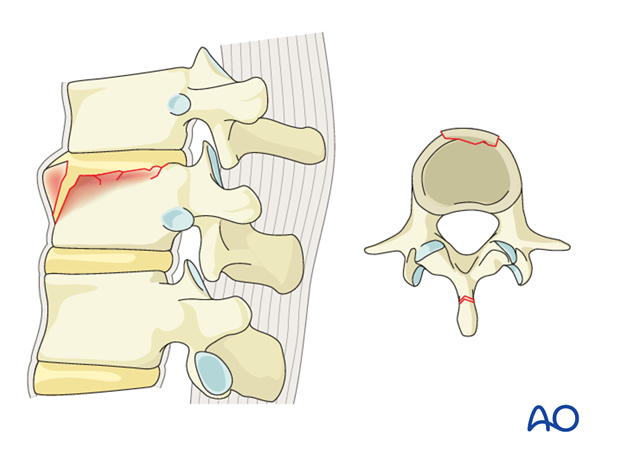
17. Type A0 injury
Type A0 is used to describe all other insignificant fractures not affecting the spinal stability in a significant way, such as an isolated fracture of the spinous process, the transverse process, or the lamina.
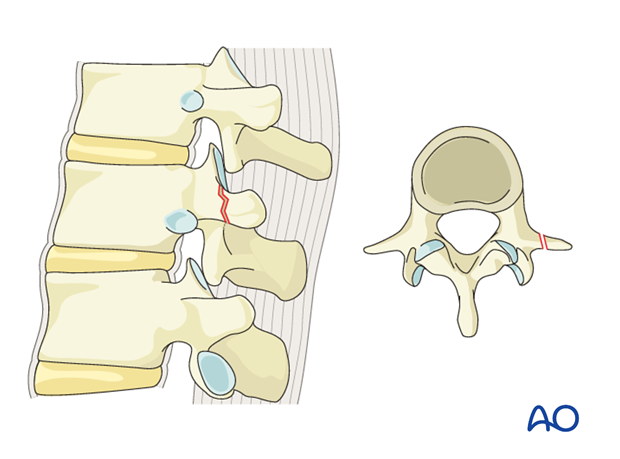
18. Modifiers
The classification system uses modifiers M1 and M2 to assist in treatment recommendations.
M1 is used to designate fractures with an indeterminate injury to the tension band based on spinal imaging or clinical examination.
M2 is used to designate a patient-specific comorbidity, which might argue either for or against surgery for those patients with relative indications for surgery.
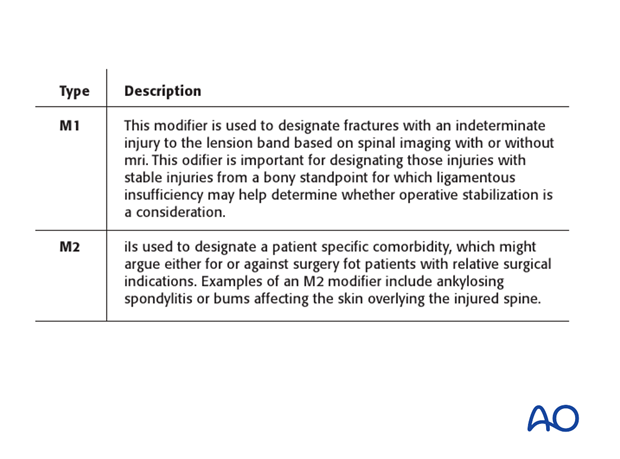
M1 assessment: Feeling the gap between two spinous processes.

19. Neurology
Neurology is assessed as seen on the grid following a neurological evaluation.
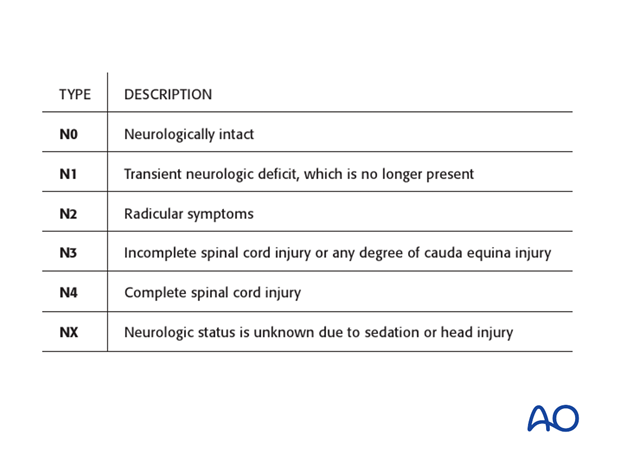
20. Nomenclature
Because type B and C are segmental injuries, the level must be described as follows:
Type B, T11/12
If there is a fracture, then it will be described between brackets as follows:
Type B, T11/12 (T12: A4)
Example 1:
Type C, T11/12 (T12: A3) N1
A translational injury with an incomplete burst fracture in a patient who is neurologically intact.
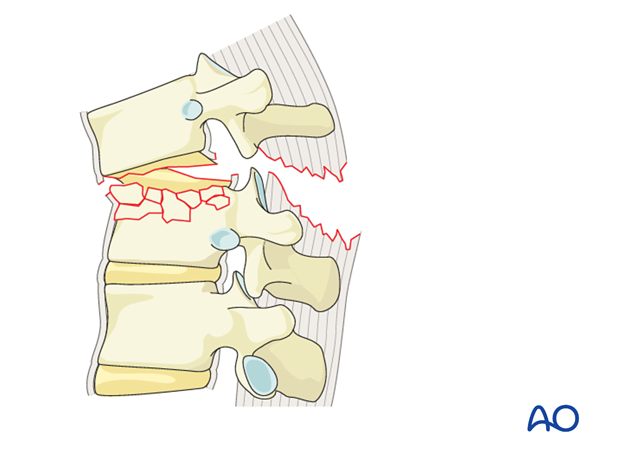
Example 2:
Type A4, L1
N3, M1
A complete burst fracture in the setting of an incomplete spinal cord injury with possible disruption of the posterior ligamentous complex.
